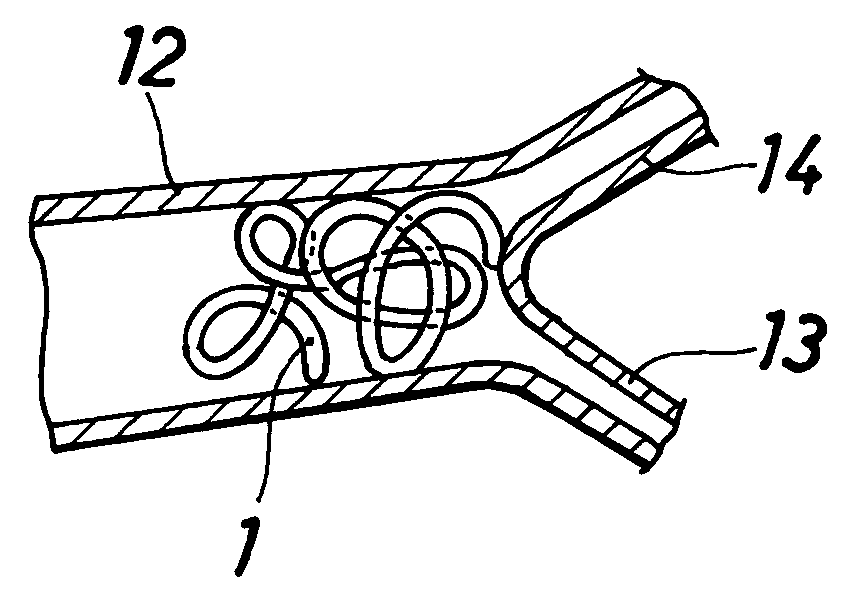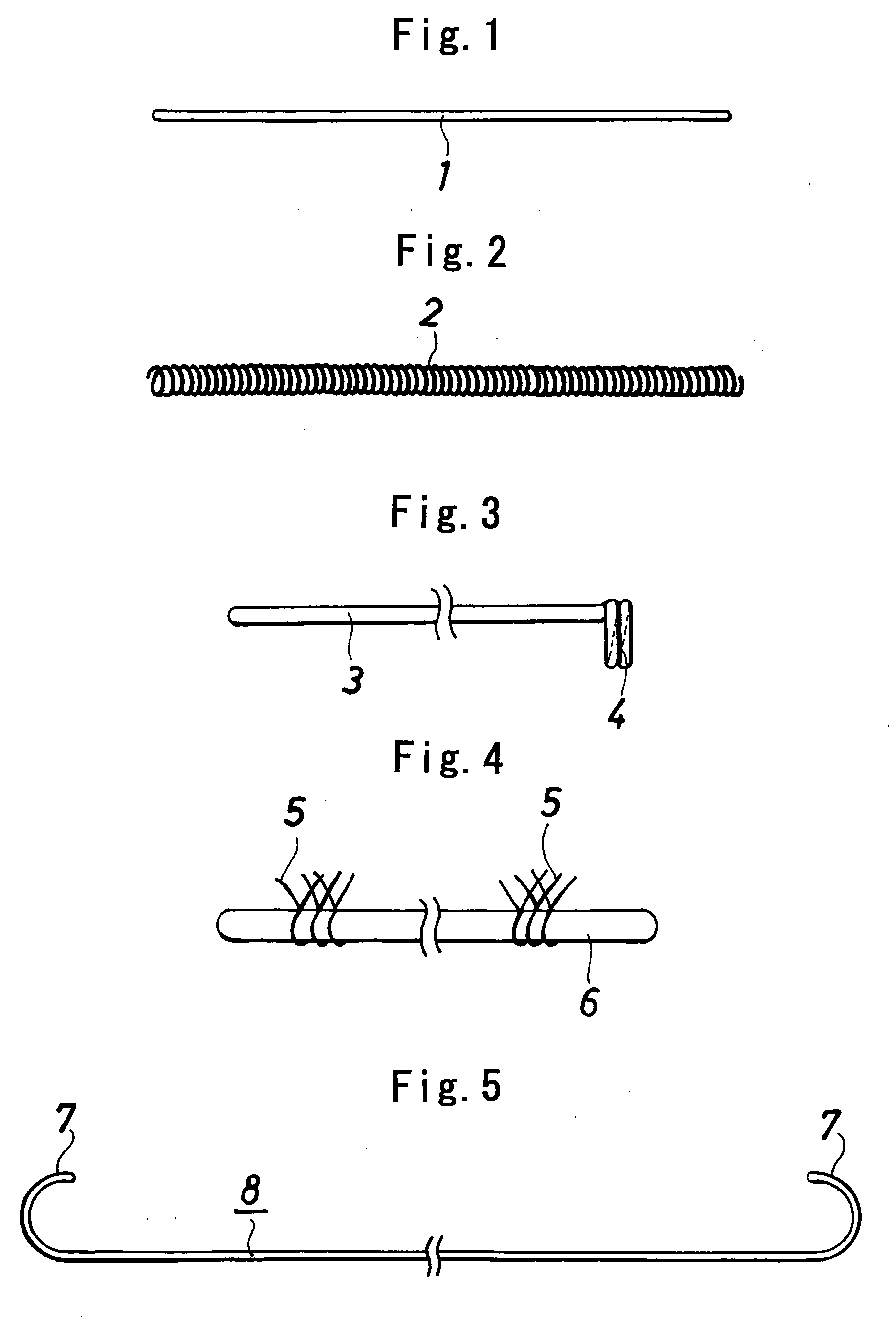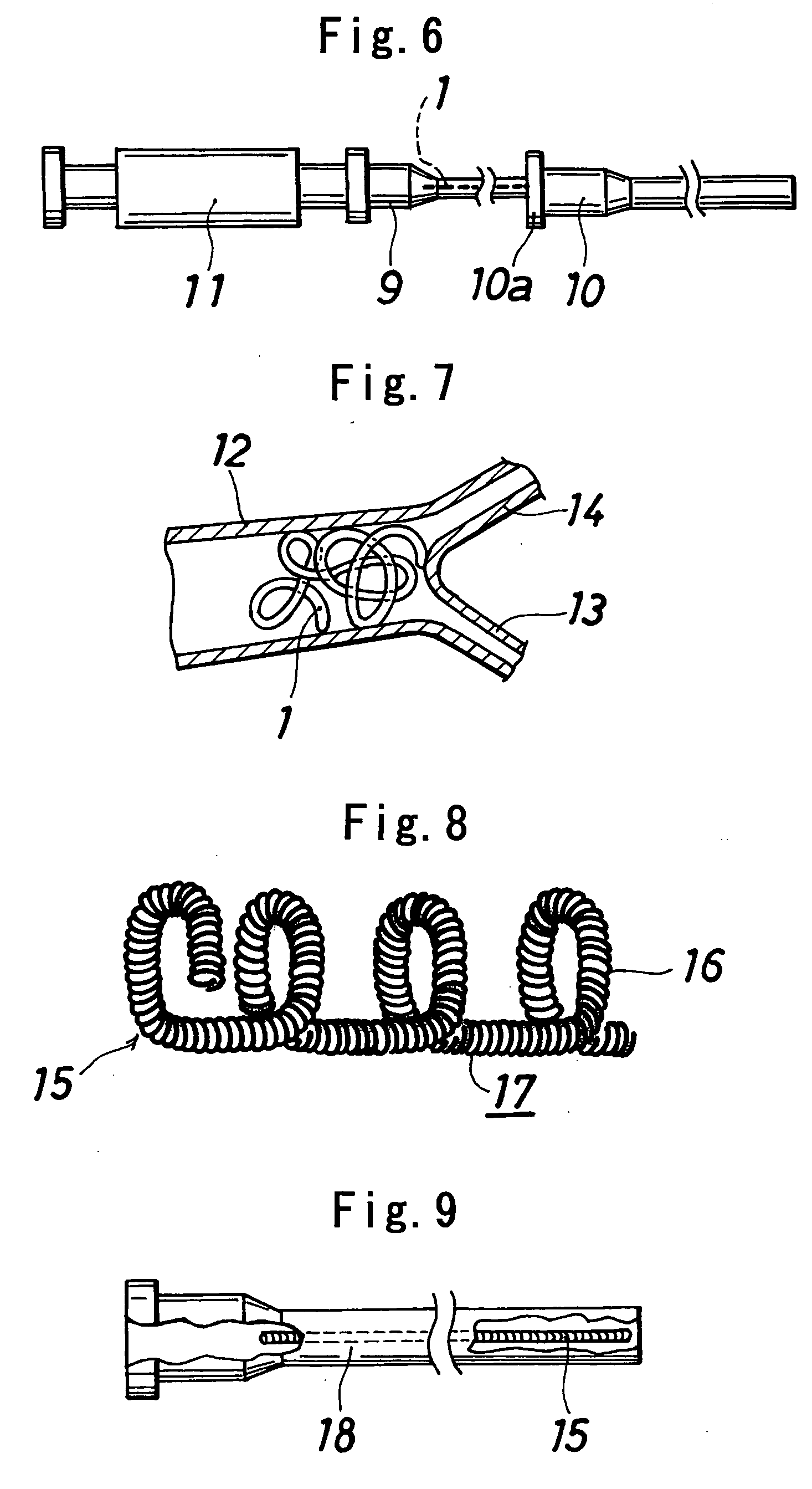Vasoocclusive article
a technology blood vessels, applied in the field of occlusive articles, can solve the problems of low compatibility of occlusive metal articles with the living body, infants and patients without resistance, and difficulty in diagnosis
- Summary
- Abstract
- Description
- Claims
- Application Information
AI Technical Summary
Benefits of technology
Problems solved by technology
Method used
Image
Examples
example 1
[0053] Poly(L-lactic acid) (product of Shimadzu Corp., trade name “Lacty,” 200,000 in weight average molecular weight, 175° C. in melting point) was melt-spun at 200° C. and drawn to obtain a single filament, 0.05 mm in diameter. Two lengths of the filament were twisted to prepare a filamentous substance, which was cut to a length of 7 cm. In this way, vasoocclusive article 1 in the form of a single line and shown in FIG. 1 was made. The filamentous substance had sufficient flexibility and was itself usable (in the form of a single line) as a vasoocclusive article.
example 2
[0054] The filamentous substance obtained in Example 1 was helically wound around a straight stainless steel mandrel having a diameter of 0.2 mm, heat-treated at 150° C., cooled and thereafter removed from the mandrel. In this way, a helical vasoocclusive article 2 was prepared which was in the form of a helical winding shown in FIG. 2 and having a diameter of 0.4 mm and a length of about 5 cm in length.
example 3
[0055] One end portion of the filamentous substance obtained in Example 1 was helically wound around a straight mandrel, heat-treated at a temperature close to the melting point of the polymer, cooled and thereafter removed from the mandrel. In this way, a vasoocclusive article 3 was prepared which is shown in FIG. 3 and was provided at one end thereof with a coil portion 4 having a diameter of 0.4 mm and two turns of winding.
PUM
 Login to View More
Login to View More Abstract
Description
Claims
Application Information
 Login to View More
Login to View More - R&D
- Intellectual Property
- Life Sciences
- Materials
- Tech Scout
- Unparalleled Data Quality
- Higher Quality Content
- 60% Fewer Hallucinations
Browse by: Latest US Patents, China's latest patents, Technical Efficacy Thesaurus, Application Domain, Technology Topic, Popular Technical Reports.
© 2025 PatSnap. All rights reserved.Legal|Privacy policy|Modern Slavery Act Transparency Statement|Sitemap|About US| Contact US: help@patsnap.com



